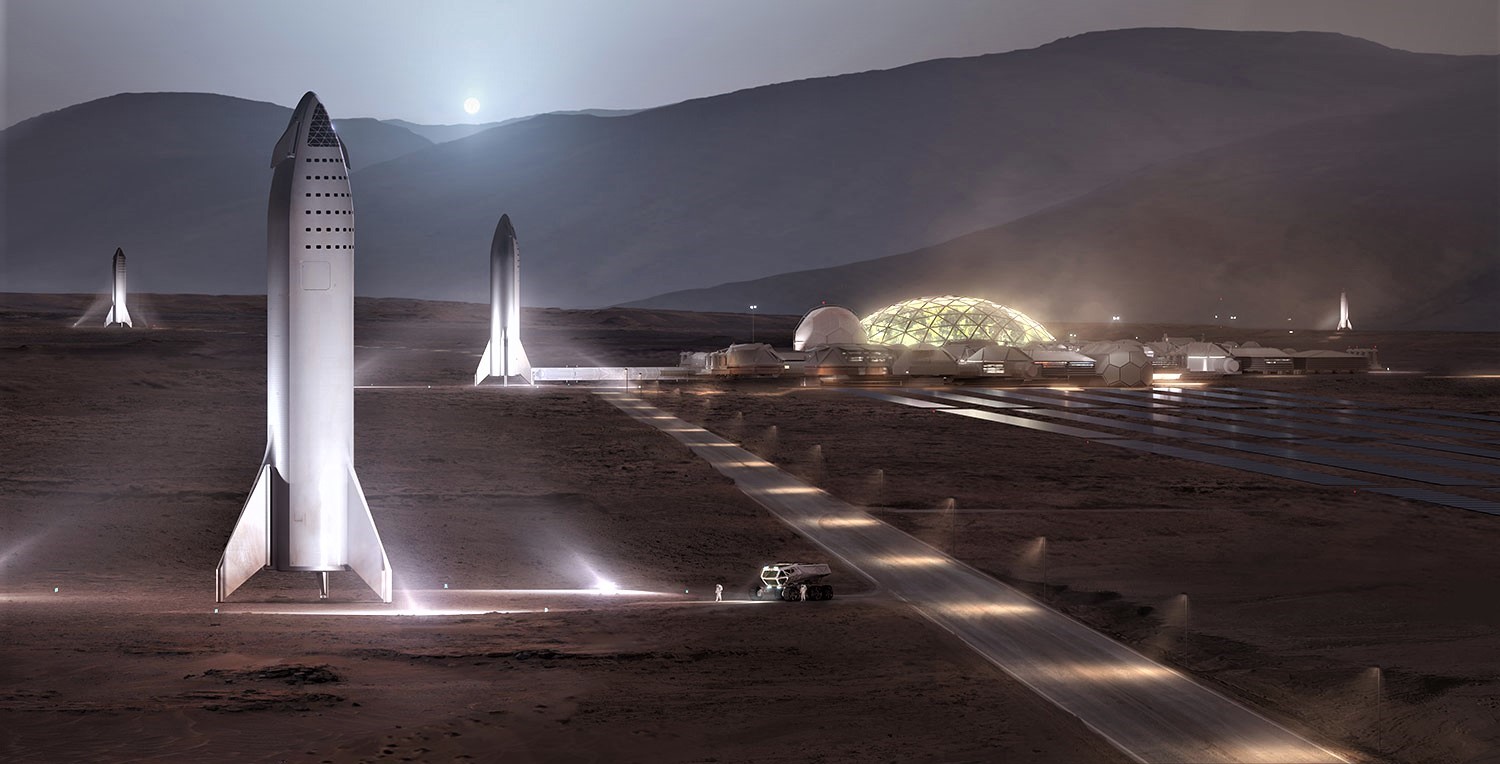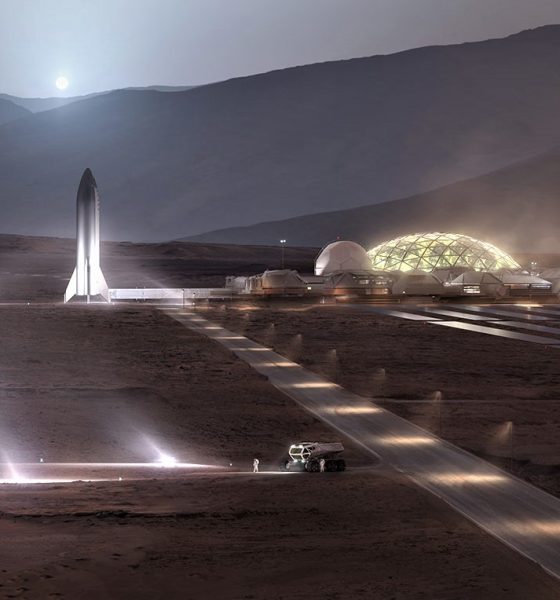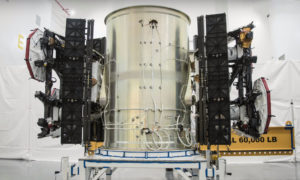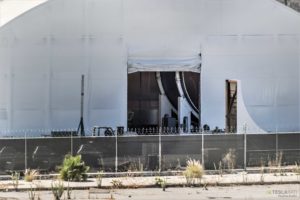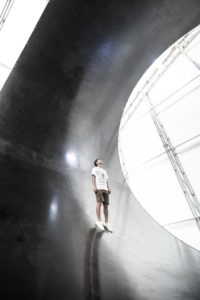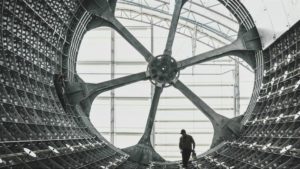Bloomberg reports that SpaceX has approached Goldman Sachs in hopes of arranging a $500M leveraged loan, potentially opening up an entirely new avenue of capital for the company as it approaches inflection points in its two largest development programs, the Starlink internet satellite constellation and its next-generation BFR rocket and spaceship.
In the United States, the market for leveraged loans (a form of debt capital) has experienced unprecedented growth in 2018, soaring past $1.3 trillion total. Unlike borrowers typically pursuing leveraged loans, SpaceX has little to no debt to speak of and is likely either financially stable or even healthily profitable.
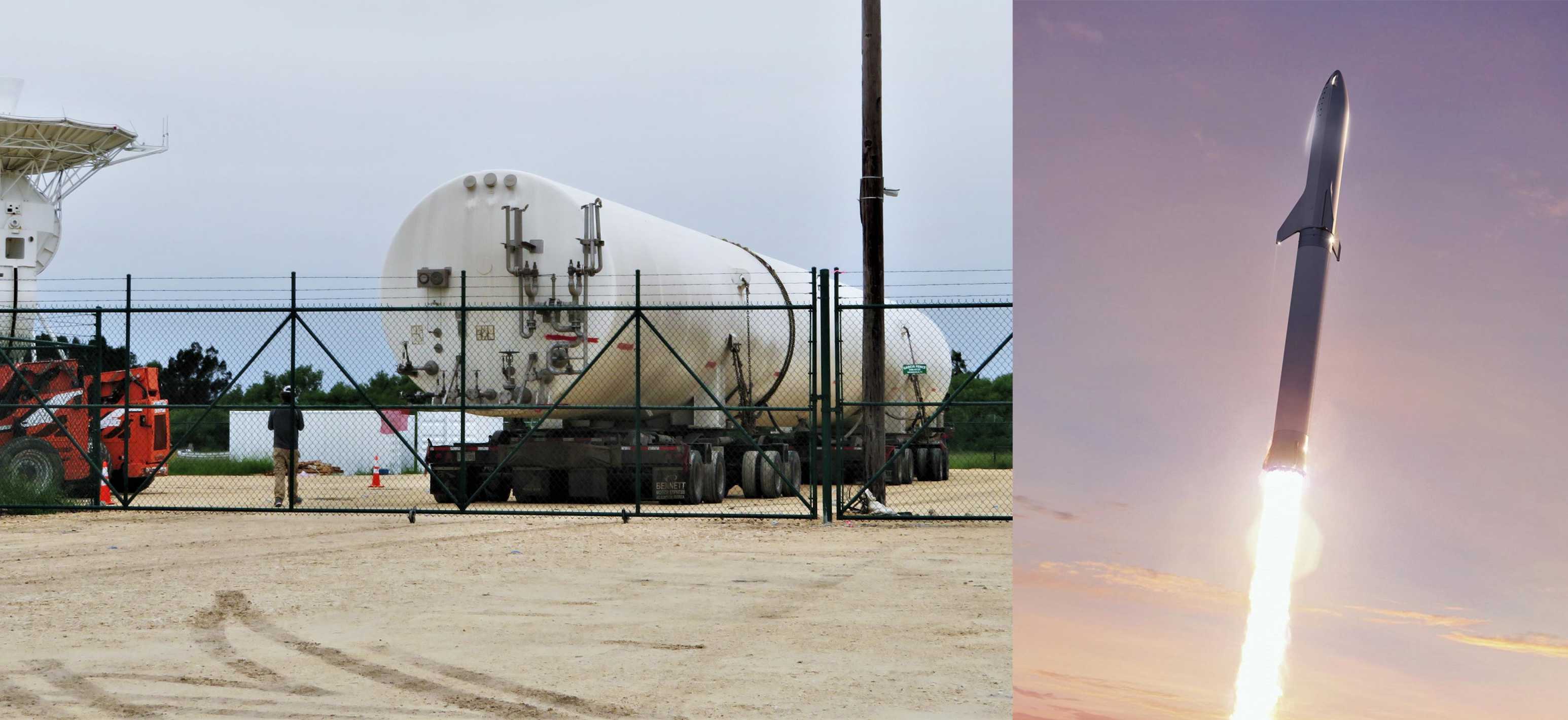
The fact that SpaceX is not already heavily leveraged (i.e. lots of debt) indicates that the company’s interest in this type of loan – versus something more like traditional equity sales – arises from the need for capital to fund major one-time investments that are likely to peak within the next 2-3 years, if not sooner. Leveraged loans are typically classified as riskier investments due to the tendency for borrowers to already have plenty of debt: in the case of SpaceX, it’s clear that that risk derives more from the fundamentally risky nature of space-related endeavors.
Success is not guaranteed even if SpaceX has plenty of funds to invest in satellite constellation or rocket R&D, while major one-time expenditures like the construction of a new launch pad and test facility for BFR also carry the risk of potentially catastrophic destruction in the event of a vehicle failure during testing or launch, one case that was proven out during the September 2016 on-pad failure of a Falcon 9 rocket, multiple times smaller than BFR. Leveraged loans still are likely to work in SpaceX’s favor, drawing in investors already willing to accept that inherent risk when the potential rewards of success are immense.
“The benefits of this maiden voyage [into leveraged loan borrowing] are clear: SpaceX should have ample funding needs for many years to come as it keeps Mars in its sights. Crucially for Musk, loans are more private than most other forms of capital raising — and very hard to short.”
Starlink
While the exact status of SpaceX’s major development programs is not public, it can be reasonably intuited that the company’s Starlink constellation is likely in the process of restructuring an R&D-centered experimental wing into something closer to a factory. Such a factory will be an absolute necessity if SpaceX intends to mass-produce high-performance smallsats at a truly unprecedented scale: ~4500 satellites make up the first wave of the constellation alone, while nearly ~7500 more would eventually follow to allow Starlink to truly blanket the world with fast internet access.
- SpaceX’s first two Starlink prototype satellites are pictured here before their inaugural Feb. 2018 launch, showing off a utilitarian design. (SpaceX)
- One of the first two prototype Starlink satellites separates from Falcon 9’s upper stage, February 2018. (SpaceX)
BFR
SpaceX’s Big F____ Rocket – deemed Big Falcon Rocket (BFR) in public statements – is no less capital-hungry. Aside from major investments in tooling and the lengthy and return-free process of designing such a large, complex, and advanced launch vehicle, SpaceX is in the process of preparing a site for a dedicated BFR factory at Port of Los Angeles. Currently housed in a huge temporary tent, it’s already clear that spaceship prototype fabrication could benefit greatly from workspace expansions and a more controlled environment. Long-term, such a factory will be a basic necessity for SpaceX to begin true serial production of BFR boosters and spaceships.
In South Texas, SpaceX is also beginning the expensive process of constructing some combination of a launch pad and testing facility dedicated to the BFR program. Most recently, two massive propellant storage tanks have arrived at a nearby facility at the same time as construction is beginning in earnest on the circa-2014 site of SpaceX’s proposed launch pad.
- SpaceX’s initial BFR work is being performed in a giant temporary tent located at Port of LA. (Pauline Acalin)
- Yusaku Maezawa stands on the first BFR composite tank/fuselage section prior to his Sept. 17 announcement. (Yusaku Maezawa)
- SpaceX’s massive BFR mandrel, used to mold its composite structures. (SpaceX)
Ultimately, the company could benefit immensely from an infusion of free capital, if for no other reason than to expedite critical infrastructure investments that will become the foundation for Starlink and BFR.
For prompt updates, on-the-ground perspectives, and unique glimpses of SpaceX’s rocket recovery fleet check out our brand new LaunchPad and LandingZone newsletters!

News
Tesla FSD fleet is nearing 7 billion total miles, including 2.5 billion city miles
As can be seen on Tesla’s official FSD webpage, vehicles equipped with the system have now navigated over 6.99 billion miles.

Tesla’s Full Self-Driving (Supervised) fleet is closing in on almost 7 billion total miles driven, as per data posted by the company on its official FSD webpage.
These figures hint at the massive scale of data fueling Tesla’s rapid FSD improvements, which have been quite notable as of late.
FSD mileage milestones
As can be seen on Tesla’s official FSD webpage, vehicles equipped with the system have now navigated over 6.99 billion miles. Tesla owner and avid FSD tester Whole Mars Catalog also shared a screenshot indicating that from the nearly 7 billion miles traveled by the FSD fleet, more than 2.5 billion miles were driven inside cities.
City miles are particularly valuable for complex urban scenarios like unprotected turns, pedestrian interactions, and traffic lights. This is also the difference-maker for FSD, as only complex solutions, such as Waymo’s self-driving taxis, operate similarly on inner-city streets. And even then, incidents such as the San Francisco blackouts have proven challenging for sensor-rich vehicles like Waymos.
Tesla’s data edge
Tesla has a number of advantages in the autonomous vehicle sector, one of which is the size of its fleet and the number of vehicles training FSD on real-world roads. Tesla’s nearly 7 billion FSD miles then allow the company to roll out updates that make its vehicles behave like they are being driven by experienced drivers, even if they are operating on their own.
So notable are Tesla’s improvements to FSD that NVIDIA Director of Robotics Jim Fan, after experiencing FSD v14, noted that the system is the first AI that passes what he described as a “Physical Turing Test.”
“Despite knowing exactly how robot learning works, I still find it magical watching the steering wheel turn by itself. First it feels surreal, next it becomes routine. Then, like the smartphone, taking it away actively hurts. This is how humanity gets rewired and glued to god-like technologies,” Fan wrote in a post on X.
News
Tesla starts showing how FSD will change lives in Europe
Local officials tested the system on narrow country roads and were impressed by FSD’s smooth, human-like driving, with some calling the service a game-changer for everyday life in areas that are far from urban centers.

Tesla has launched Europe’s first public shuttle service using Full Self-Driving (Supervised) in the rural Eifelkreis Bitburg-Prüm region of Germany, demonstrating how the technology can restore independence and mobility for people who struggle with limited transport options.
Local officials tested the system on narrow country roads and were impressed by FSD’s smooth, human-like driving, with some calling the service a game-changer for everyday life in areas that are far from urban centers.
Officials see real impact on rural residents
Arzfeld Mayor Johannes Kuhl and District Administrator Andreas Kruppert personally tested the Tesla shuttle service. This allowed them to see just how well FSD navigated winding lanes and rural roads confidently. Kruppert said, “Autonomous driving sounds like science fiction to many, but we simply see here that it works totally well in rural regions too.” Kuhl, for his part, also noted that FSD “feels like a very experienced driver.”
The pilot complements the area’s “Citizen Bus” program, which provides on-demand rides for elderly residents who can no longer drive themselves. Tesla Europe shared a video of a demonstration of the service, highlighting how FSD gives people their freedom back, even in places where public transport is not as prevalent.
What the Ministry for Economic Affairs and Transport says
Rhineland-Palatinate’s Minister Daniela Schmitt supported the project, praising the collaboration that made this “first of its kind in Europe” possible. As per the ministry, the rural rollout for the service shows FSD’s potential beyond major cities, and it delivers tangible benefits like grocery runs, doctor visits, and social connections for isolated residents.
“Reliable and flexible mobility is especially vital in rural areas. With the launch of a shuttle service using self-driving vehicles (FSD supervised) by Tesla in the Eifelkreis Bitburg-Prüm, an innovative pilot project is now getting underway that complements local community bus services. It is the first project of its kind in Europe.
“The result is a real gain for rural mobility: greater accessibility, more flexibility and tangible benefits for everyday life. A strong signal for innovation, cooperation and future-oriented mobility beyond urban centers,” the ministry wrote in a LinkedIn post.
News
Tesla China quietly posts Robotaxi-related job listing
Tesla China is currently seeking a Low Voltage Electrical Engineer to work on circuit board design for the company’s autonomous vehicles.

Tesla has posted a new job listing in Shanghai explicitly tied to its Robotaxi program, fueling speculation that the company is preparing to launch its dedicated autonomous ride-hailing service in China.
As noted in the listing, Tesla China is currently seeking a Low Voltage Electrical Engineer to work on circuit board design for the company’s autonomous vehicles.
Robotaxi-specific role
The listing, which was shared on social media platform X by industry watcher @tslaming, suggested that Tesla China is looking to fill the role urgently. The job listing itself specifically mentions that the person hired for the role will be working on the Low Voltage Hardware team, which would design the circuit boards that would serve as the nervous system of the Robotaxi.
Key tasks for the role, as indicated in the job listing, include collaboration with PCB layout, firmware, mechanical, program management, and validation teams, among other responsibilities. The role is based in Shanghai.
China Robotaxi launch
China represents a massive potential market for robotaxis, with its dense urban centers and supportive policies in select cities. Tesla has limited permission to roll out FSD in the country, though despite this, its vehicles have been hailed as among the best in the market when it comes to autonomous features. So far, at least, it appears that China supports Tesla’s FSD and Robotaxi rollout.
This was hinted at in November, when Tesla brought the Cybercab to the 8th China International Import Expo (CIIE) in Shanghai, marking the first time that the autonomous two-seater was brought to the Asia-Pacific region. The vehicle, despite not having a release date in China, received a significant amount of interest among the event’s attendees.
